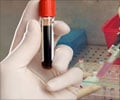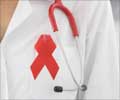AIDS/HIV Risk Associated with Blood Transfusion
AIDS/HIV risk associated with blood transfusion is very if blood is routinely screened by the blood test
The Human Immunodeficiency Virus (HIV), which causes AIDS, is easily transmitted through blood transfusions. Blood transfusions will always carry certain risks, but HIV transmission through blood transfusion can virtually be prevented. Blood should be screened for the presence of diseases causing viruses, bacteria, or other microorganisms, or for the presence of anti bodies produced against these agents. Screening of blood has to be done before transfusion to prevent from infection into recipient. Majority of tests detect the presence of anti bodies to HIV and not the virus itself.
Period
Although HIV tests are very sensitive, there is a window period. This is the period between the onset of infection with HIV and the appearance of detectable anti bodies to the virus. In the case of most sensitive HIV tests the window period is about three weeks.
Estimated Risk
The overall risk of AIDS infection by transfusion remains quite small when compared to other commonly accepted risks. It was estimated that between 67 and 227 HIV-positive blood units entered the nation's blood supply undetected in 1987 out of 20 million units of blood and its components transfused annually. Their best estimate was 131 units, which corresponds to a risk to a patient of one in 153,000 per unit transfused.














